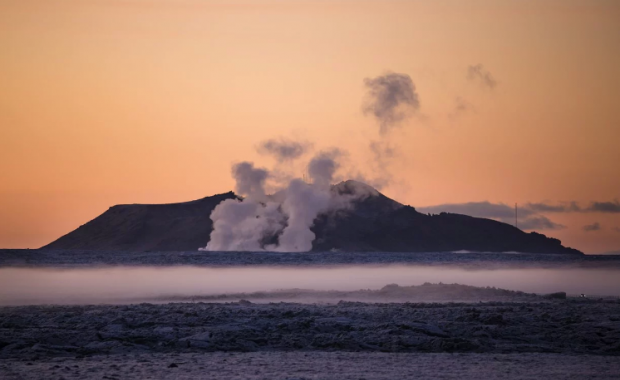Today, Friday January 25, is the first day of Þorri, the fourth month of winter, according to the ancient Norse calendar. Since pagan times Icelanders have celebrate the month of Þorri with a great mid-winter feast named Þorrablót, in honour of the Nordic god of thunder, Þór.
After the adoption of Christianity in the year 1000 the tradition gradually faded and then disappeared. During Iceland‘s struggle for independence from Denmark in the 19th century, young Icelanders studying in Copenhagen decided to revive the old custom of Þorrablót, gathering to feast on traditional Icelandic foods, sing old songs and to dream of an independent Iceland. The first modern Þorri feast took place in the Danish capital on January 24th 1873.
Read more: 8 Icelandic phrases to learn for the mid-winter Þorrablót feast
The practice spread to Iceland the following year, quickly becoming an important annual festival.
Greeting Þorri dressed in one leg of your pants
There are many old, traditions linked to the month of Þorri. The first day of Þorri is Bóndadagur, or husband's day. The master of the house was therefore supposed to rise before the rest of the household on the first day of Þorri to welcome Þorri with a special ceremony:
He was to exit the house, wearing only his shirt and dressed in just one leg of his pants, and then hop around the house on one foot, all the while dragging the other pant-leg behind him. After these strange schenanigans a large feast was organized with people from neighbouring farms in attendance.
By other accounts Þorri was to be greeted by the housewife, while the master of the house was to welcome the month of Góa (the fifth month of winter that began on a Sunday between the 18th and 24th of February): The first day of Góa is Konudagur, a day of celebration of the housewife.
Celebrating Þorri with a traditional Þorrablót feast
It's unclear how widespread the custom of hopping around while dragging your pants, but the custom of organizing Þorrablót feasts is still alive and well in Iceland. During Þorri Icelanders attend Þorrablót feasts at work or with friends, sampling some of the more challenging traditional foods, like fermented shark and ram's testicles, washed down with a shot of the ever popular Brennivín!
Read more: Want to know what you are eating at an Icelandic Þorrablót? Here's your answer!
Below is a video from CCP explaining Þorrablót:
Today, Friday January 25, is the first day of Þorri, the fourth month of winter, according to the ancient Norse calendar. Since pagan times Icelanders have celebrate the month of Þorri with a great mid-winter feast named Þorrablót, in honour of the Nordic god of thunder, Þór.
After the adoption of Christianity in the year 1000 the tradition gradually faded and then disappeared. During Iceland‘s struggle for independence from Denmark in the 19th century, young Icelanders studying in Copenhagen decided to revive the old custom of Þorrablót, gathering to feast on traditional Icelandic foods, sing old songs and to dream of an independent Iceland. The first modern Þorri feast took place in the Danish capital on January 24th 1873.
Read more: 8 Icelandic phrases to learn for the mid-winter Þorrablót feast
The practice spread to Iceland the following year, quickly becoming an important annual festival.
Greeting Þorri dressed in one leg of your pants
There are many old, traditions linked to the month of Þorri. The first day of Þorri is Bóndadagur, or husband's day. The master of the house was therefore supposed to rise before the rest of the household on the first day of Þorri to welcome Þorri with a special ceremony:
He was to exit the house, wearing only his shirt and dressed in just one leg of his pants, and then hop around the house on one foot, all the while dragging the other pant-leg behind him. After these strange schenanigans a large feast was organized with people from neighbouring farms in attendance.
By other accounts Þorri was to be greeted by the housewife, while the master of the house was to welcome the month of Góa (the fifth month of winter that began on a Sunday between the 18th and 24th of February): The first day of Góa is Konudagur, a day of celebration of the housewife.
Celebrating Þorri with a traditional Þorrablót feast
It's unclear how widespread the custom of hopping around while dragging your pants, but the custom of organizing Þorrablót feasts is still alive and well in Iceland. During Þorri Icelanders attend Þorrablót feasts at work or with friends, sampling some of the more challenging traditional foods, like fermented shark and ram's testicles, washed down with a shot of the ever popular Brennivín!
Read more: Want to know what you are eating at an Icelandic Þorrablót? Here's your answer!
Below is a video from CCP explaining Þorrablót:






